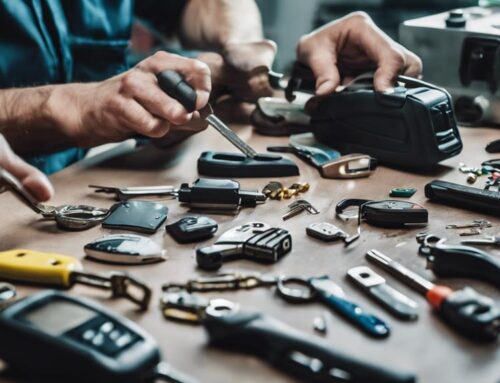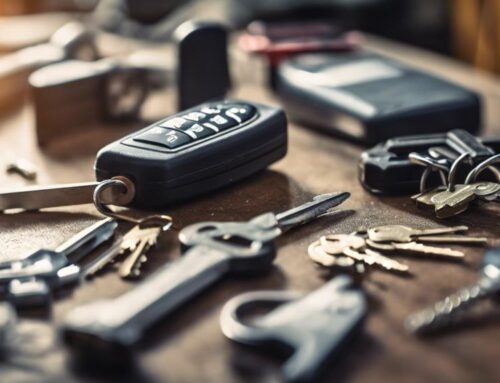Yes, a locksmith can open your locked safe if you’ve forgotten the combination. Professional locksmiths use specialized tools and techniques to manipulate both mechanical and electronic safe locks without causing damage. Whether your safe features a classic dial or a digital keypad, a skilled locksmith can either reset the combination or bypass the lock mechanism entirely. They’re trained in various methods, including manual manipulation, electronic keypad resetting, and drilling when necessary. Verifying your ownership and maintaining confidentiality are essential steps they follow. By consulting an expert, you’re also ensuring a secure method to regain access to your safe’s contents, setting you on the path to preventing future lockouts.
Understanding Safe Lock Mechanisms
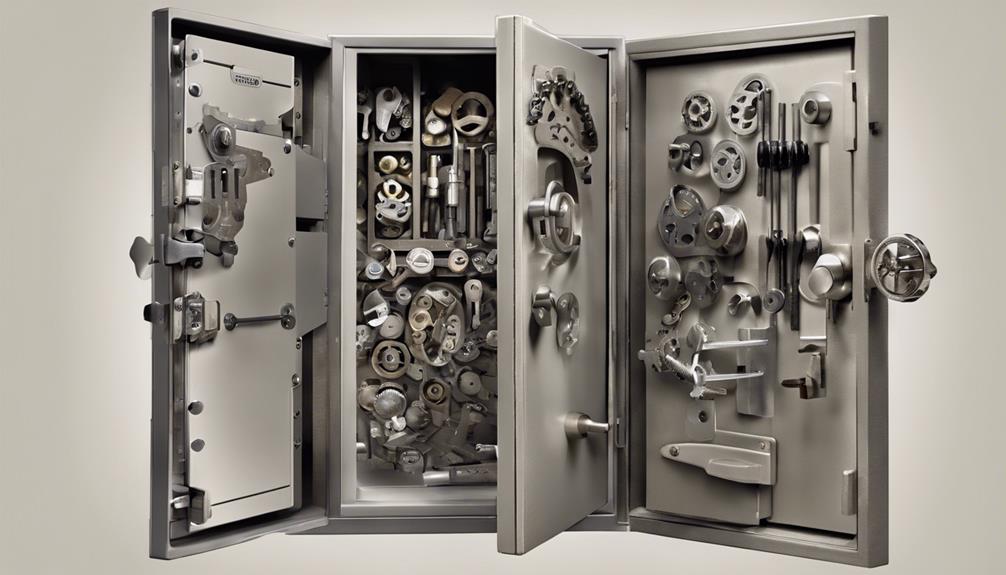
To effectively open a safe, you must first understand its lock mechanism, whether it involves a mechanical combination, a key, or a digital interface. Say you’ve lost your key or forgotten your combination—panic not! Your friendly neighborhood locksmith might just have the magical override key to whisk your troubles away. But here’s the kicker: not all safes bow down to the master key. If that’s the case, you may need to reset the lock. For those stubborn mechanical locks that refuse to budge, a bit of locksmith wizardry might be required. It’s not just about twisting and turning; it’s about knowing the dance between the lock and its mechanism. So, before you start hammering away in frustration, remember—knowledge is power!
Types of Safe Locks
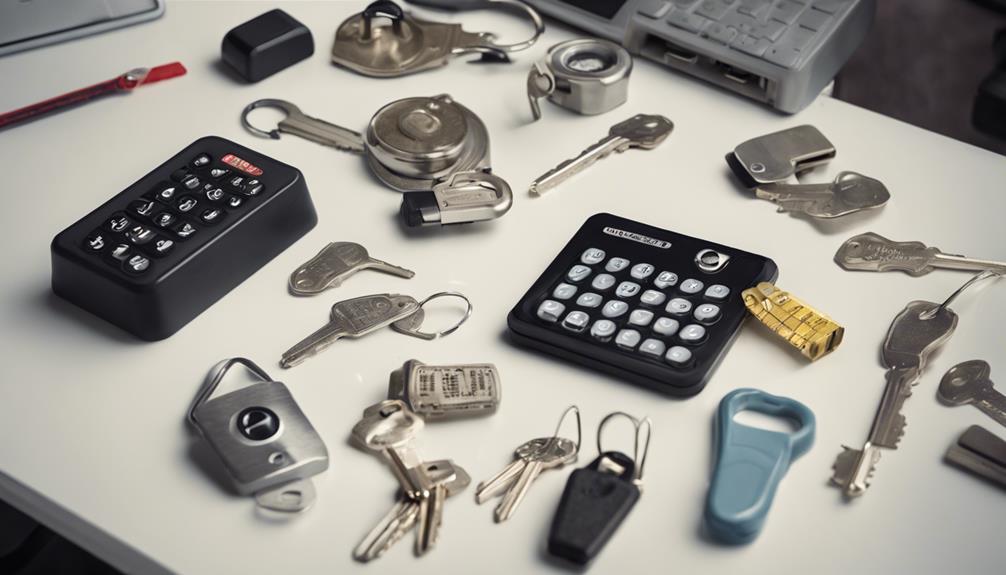
Understanding how a safe’s lock mechanism works leads us naturally to explore the different types of safe locks available. If you’ve got a mechanical safe, you’re likely twisting a combination lock or fumbling with a key. These safes are your old-school, turn-dial buddies that feel like cracking a secret code. On the flip side, electronic safes bring a bit of James Bond vibes with their digital touchscreens or keypads. Forgot your code? No sweat, some safes have a master key or a change key to circumvent the pesky need for memory. Whether you’re dealing with an electronic or mechanical model, a locksmith can be your hero, unraveling the mysteries of your safe without breaking a sweat.
Methods for Safe Opening
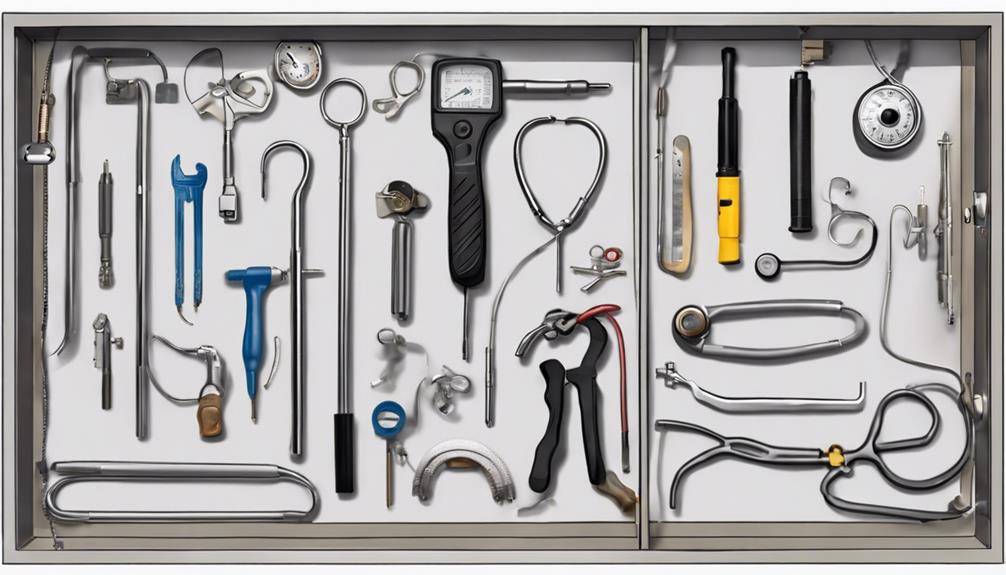
When you’re faced with a safe that won’t budge, you might try manual manipulation techniques. These methods require skill and patience, as they involve feeling the lock’s mechanics to find the correct combination. If the safe has an electronic keypad, resetting it might be your best bet, which involves reprogramming the lock according to manufacturer’s instructions.
Manual Manipulation Techniques
Locksmiths often employ manual manipulation techniques to open locked safes without the combination, using their expertise to carefully adjust the lock’s internal components. When you forget the combination, this skilled locksmith can become your new best friend! They’ll finesse those fiddly bits inside your safe with the finesse of a cat burglar—only, you know, legally. This method is wonderfully non-destructive, ensuring your trusty safe isn’t left looking like it’s been through a bank heist. So, rest easy knowing that even if your memory’s a bit rusty, your safe won’t be damaged. Thanks to manual manipulation, your beloved locksmith can crack the code without making your safe crack up!
Electronic Keypad Resetting
If you’ve forgotten your safe’s code, a locksmith can often reset the electronic keypad by following the manufacturer’s specific instructions. Imagine your safe as a stubborn donkey; the right carrot (or factory code) can make it budge! A professional locksmith has the magic touch to coax your safe open, using either the factory-set combinations or a secret sequence of button-presses. They’re not just poking around randomly—these experts follow strict manufacturer guidelines to make sure they’re granting access to the safe without any funny business. So, if you’ve forgotten your combination, don’t sweat it! Your friendly neighborhood locksmith is like a safe whisperer, ready to restore your access without a hitch.
Safe Combination Retrieval
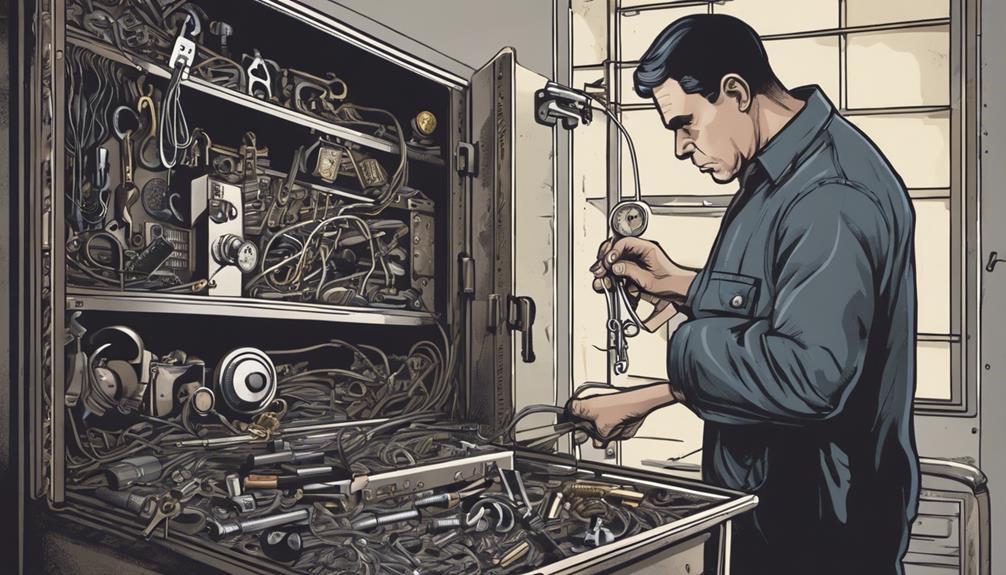
When attempting to retrieve a safe’s combination, you need to understand the lock mechanisms thoroughly. Professional tools are necessary to manipulate or decode the lock without the original combination. Ethical considerations must also be upheld to guarantee the process respects privacy and ownership rights.
Understanding Lock Mechanisms
To comprehend how a locksmith retrieves or resets a safe’s combination, it’s crucial to first grasp the different lock mechanisms employed by mechanical and electronic safes. Mechanical safes might make you feel like a spy with their turn-dials and keys, but electronic safes get all high-tech with keypads and biometrics. Now, if you’re panicking because you’ve forgotten your combination, relax! A locksmith can often open your safe using an override key or by accessing a manufacturer’s record of your safe’s combo. They might also reset the electronic safes with a special access code. So, no need to blast your safe open—just call in the pros and let them work their magic!
Professional Tools Required
Understanding lock mechanisms sets the stage for exploring the specialized tools locksmiths use to retrieve or reset a safe’s combination without the original code. If you’re in a pickle, remember that a professional locksmith’s toolkit is like a magician’s hat but for safes. They’ve got borescopes to sneak a peek inside your safe without making a mess, and drilling tools that could charm the combination out of the toughest safes, be they mechanical or electronic. It’s not just about poking around; these wizards make sure they open safes without damaging them. So, next time you’re locked out, don’t sweat it! Your locksmith can access your treasures smoothly, armed with the right tools to tackle your forgetful moment!
Ethical Considerations Involved
Locksmiths must verify your ownership before attempting to open your locked safe, ensuring that ethical practices are firmly in place. You know, just in case you’re secretly aiming to become the next great safe-cracker. When you forget the combination, don’t sweat it! Your professional locksmith is here, not just with fancy tools, but with a strict moral compass. They adhere to strict guidelines and industry standards to access your safe without turning your little oops into a big scandal. Customer confidentiality? They’ve got that zipped tighter than a drum! So, next time you’re locked out, remember: your locksmith isn’t just cracking your safe—they’re keeping your secrets safe too. Trust me, they’ve seen weirder than your forgotten digits!
Professional Locksmith Services
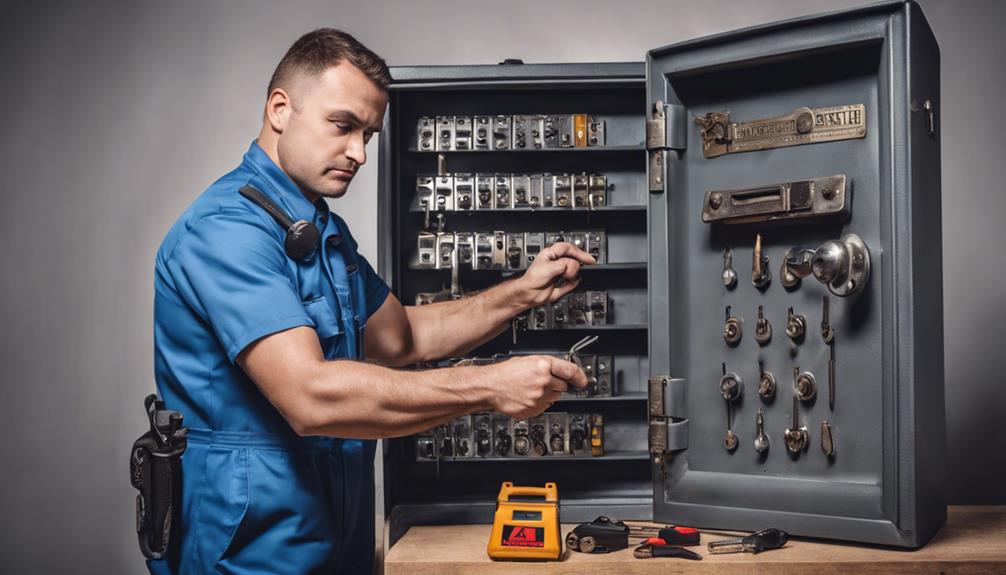
When you’re locked out of your safe, professional locksmith services can provide a quick and secure solution without the original combination. These skilled magicians, ahem, locksmiths, use specialized tools to open your locked safe, even when the combination has taken a holiday from your memory. They’re all about bypassing safe locks without a fuss, and can even reset locks to give you a fresh start. Trustworthy? Absolutely. They guarantee your prized possessions remain unscathed during their rescue mission.
| Service Offered | Why It’s Cool |
|---|---|
| Emergency Access | Get back in faster than you can say ‘Oops!’ |
| Bypass Safe Locks | Like a magic trick, but for security |
| Reset Locks | Fresh start for forgotten combos |
| Retrieve Combinations | They find the numbers you’ve misplaced |
Preventing Future Safe Lockouts
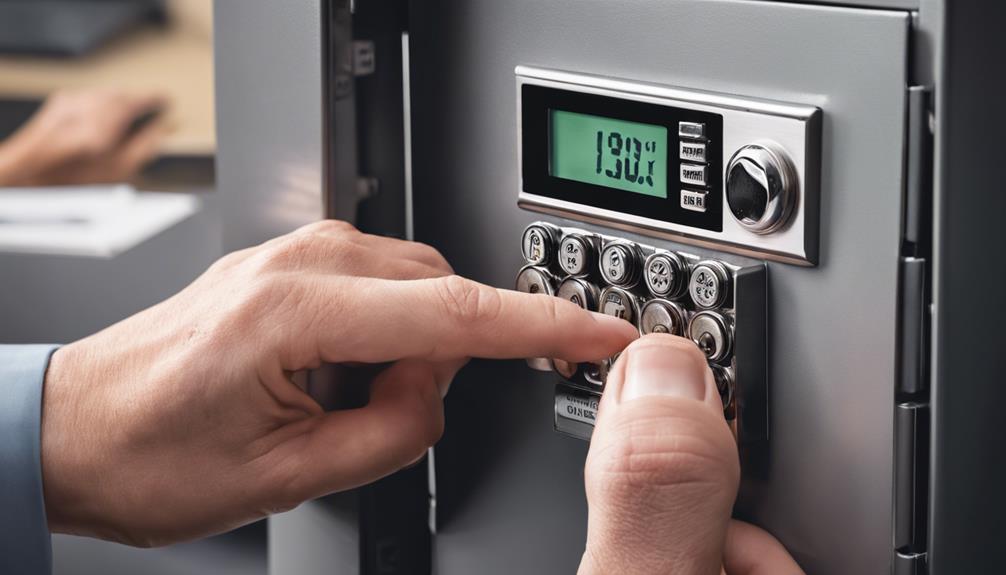
To prevent future safe lockouts, regularly update and memorize your combination. If your memory’s as reliable as a cat in a yarn shop, consider changing combinations now and then to keep things fresh. Keeping override keys in a spot that’s both secure and accessible—like a sock drawer or behind a family portrait—might save you from a lockout debacle. If you’re keen on avoiding the “oops, I did it again” moment with your safe, seek professional assistance for changing combinations and ensuring your safe model is compatible with a change key. That way, you won’t need locksmith help every time you mix up your digits! Remember, lockout prevention is less about luck and more about smart, proactive measures.
Promoting Low Rate Locksmith
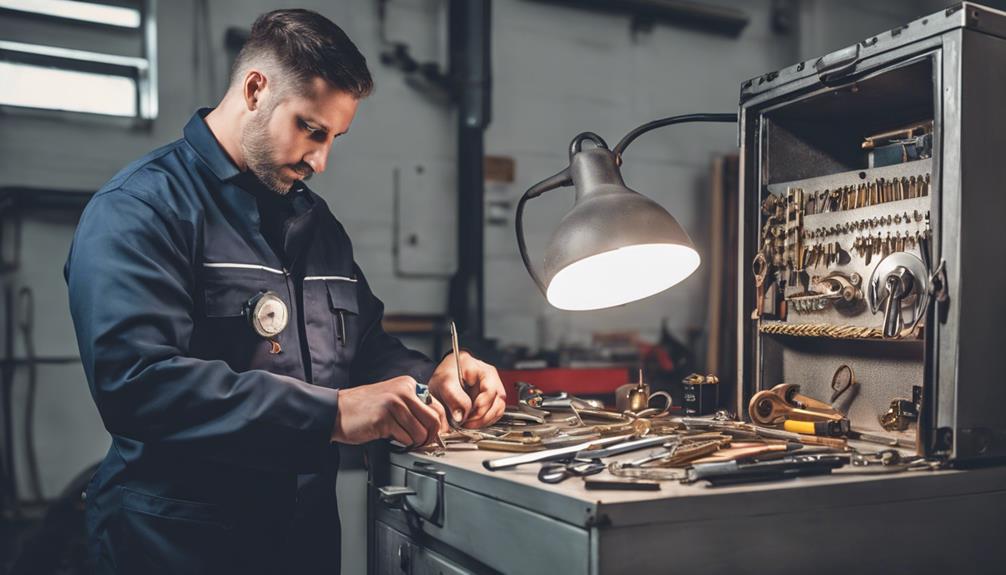
If you’ve forgotten your safe’s combination, Low Rate Locksmith offers expert services to efficiently open locked safes. Imagine the horror of forgetting your combination—like losing the key to your treasure chest but way less pirate-like and more panic-inducing. Fear not, because these professional locksmiths can handle various types of safes and their perplexing security mechanisms. They provide cost-effective solutions, so you won’t have to break the bank (or your safe) to regain access. With Low Rate Locksmith, you get reliable assistance with locked safes and a chuckle or two at the irony of securing things from yourself. Next time you forget the combination, remember—the solution is just a call away.
Frequently Asked Questions
What Are Typical Costs for Locksmith Services to Open a Safe?
When you’re in a pickle because your safe won’t budge, calling a locksmith might cost you between $80 and $200. This price varies based on the safe’s complexity and the locksmith’s skills. Don’t forget, there might be extra fees for urgent needs or after-hours services. It’s wise to ask about all potential costs upfront to avoid surprises. Remember, it’s better to be safe than sorry when dealing with lockouts!
How Long Does It Take to Open a Locked Safe?
If you’re stuck waiting on a locksmith to crack open your locked safe, you’ll be twiddling your thumbs anywhere from 10 minutes to a few hours. The time it takes really hinges on the complexity of the safe’s lock and the expertise of the locksmith. Basic models might open quickly, while high-security safes could have you watching the clock a bit longer. So, grab a coffee and settle in; it could take a while.
Can Opening a Safe Damage Its Contents?
Yes, opening a safe can potentially damage its contents, especially if done improperly. Professional locksmiths, however, use specialized tools and techniques designed to open safes without harming what’s inside. They’re trained to handle different types of safes and prioritize methods that maintain the integrity of the contents. So, if you’re worried about your valuables, it’s best to call in a pro rather than trying to crack it open yourself.
Are There Legal Considerations Before Hiring a Locksmith for a Safe?
Before you call a locksmith to crack open your personal Fort Knox, make sure you’re not crossing any legal lines. You’ll need to prove that it’s yours or you’ve got the green light to access it. Whip out that ID and any paperwork showing you’re the boss of that safe. Skipping this step could lead to a sticky legal mess, turning a simple forgetful moment into a real-life courtroom drama.
Can Locksmiths Open Antique or Vintage Safes?
Yes, locksmiths can indeed open antique or vintage safes. They use specialized tools and techniques that won’t damage the unique mechanisms of these old treasures. Their expertise in the intricate designs and security features of historical safes allows them to handle the delicate components effectively. So, if you’ve got an old safe that’s locked tight, a skilled locksmith is your go-to professional for opening it without causing any harm.





